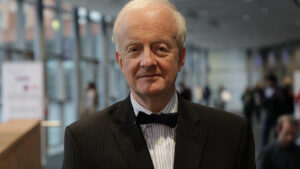
“The time has definitely come to look at the evidence, and redo these studies,” posited Alun Davies, MD, from Imperial College London in London, England, putting forward his argument that the NASCET and ECST clinical trials “need to be reconducted” at this year’s Charing Cross (CX) Symposium (April 25–27) in London.
Much of Davies’ argument centred on the fact that best medical therapy—the comparator arm against which carotid endarterectomy (CEA) was assessed, and found to produce clinical benefits in carotid artery stenosis patients, in both of these studies—is “significantly better than it was” at the time.
“We are relying on evidence from 1992, and I would say the playing fields have completely changed,” he noted. After outlining discrepancies between the North American NASCET and European ECST trials regarding how internal carotid artery stenosis was defined—with ECST having a higher threshold for severity—Davies said NASCET observed a 3.3% stroke/death rate at one month in its medical therapy arm, compared to roughly 5–6% with CEA. Recent research has shown that targeting a patient’s cholesterol, and initiating best medical therapy more quickly, can reduce adverse event rates by up to 80% early on, said Davies. He theorized that stroke/death incidence could now be as low as 0.7% with today’s best medical therapy.












